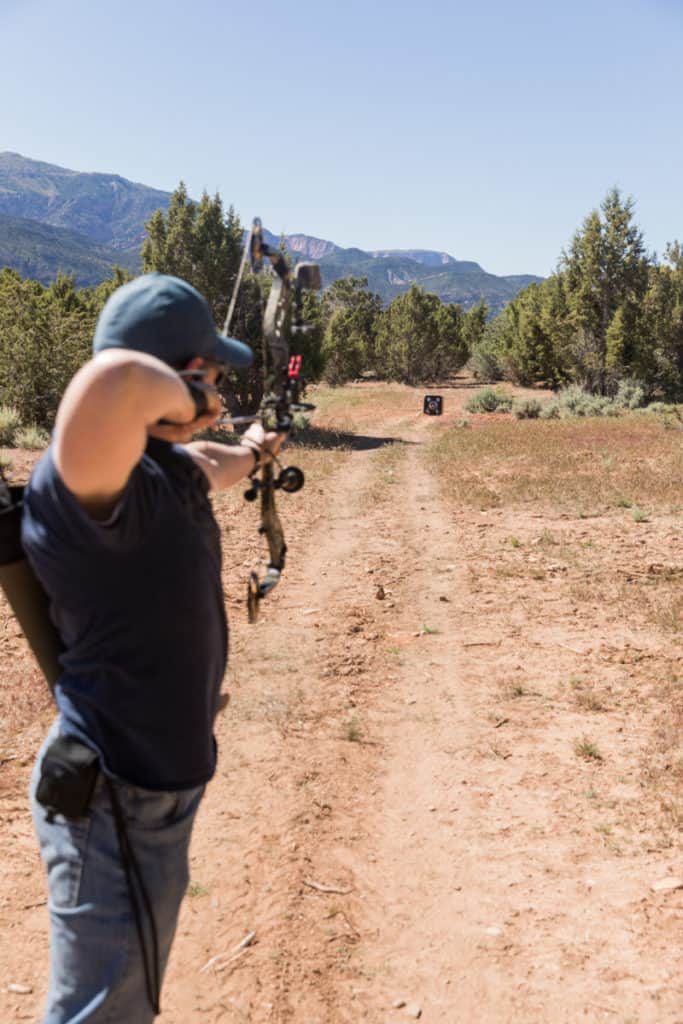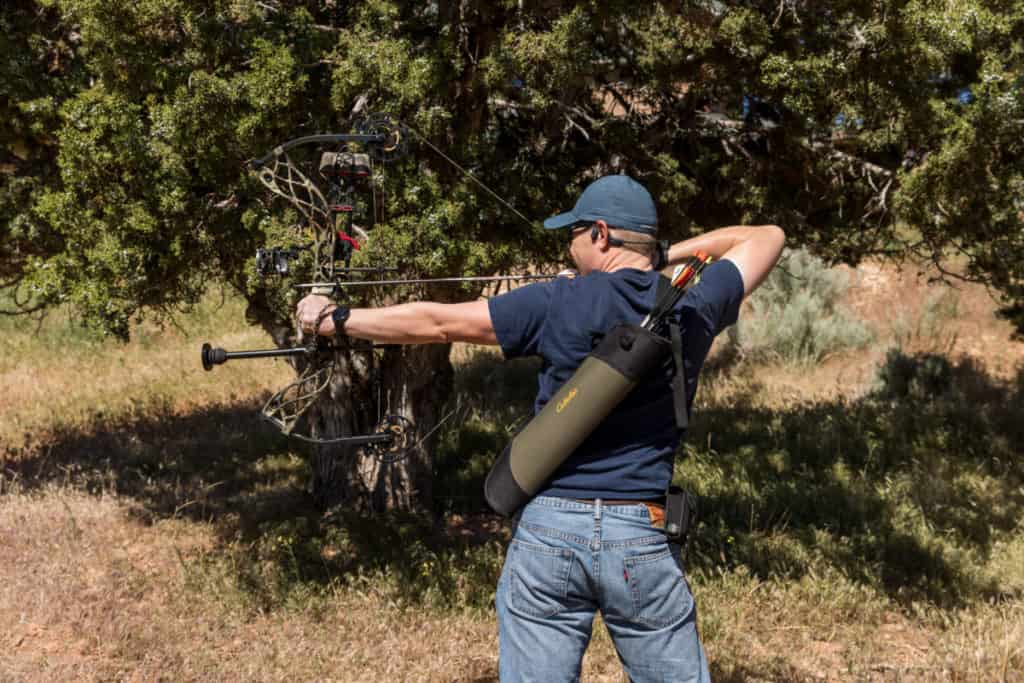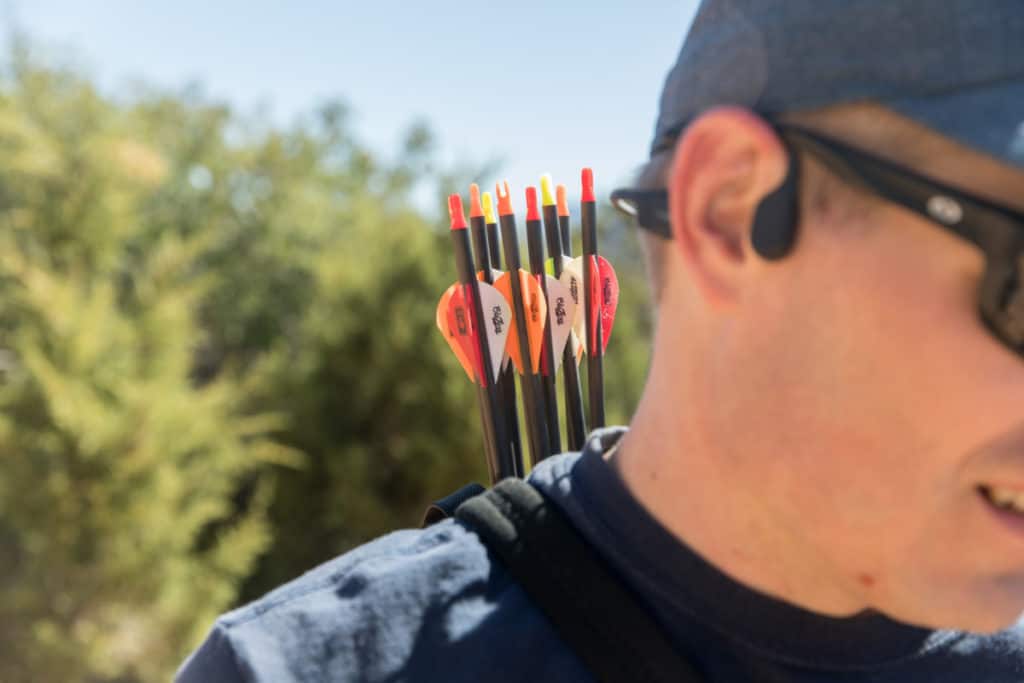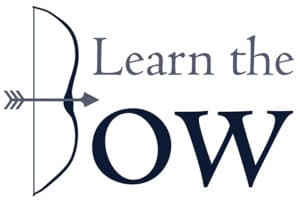Archery should be instinctive right? After all, archery has been around for thousands of years. The movies make it look easy. The Native Americans make it look easy. You just hold the string up to your face, give it a little aim, and let go! At least, it looks that easy when you watch it on a screen.
Picking up my first recurve bow felt pretty natural. I could pull that string back pretty far, and I was mostly hitting the target. I thought with time I would be sure to improve my aim. But I learned it wasn’t just going to happen. I needed to take real steps to improve my aim. I really want to share this with all beginner archers! I wish this information had been available to me when I started. So let’s jump right in on how to aim with a recurve bow.
1) Start with your feet facing 90 degrees away from the target. So your toes are pointed either to the East or to the West if your target is due North.

2) When you pull your string all the way back, your elbow needs to drop down to your shoulder level. Don’t let that elbow ride up. Keep it even with your shoulder. Keep rotating it down until it is even with your shoulder.

3) When the string is pulled all the way back, you line the string up with your pupil of your eye. This will put the arrow directly below your eye. If the arrow is too far right or too far left, you will hit the target too far left or too far right.
4) If you are right handed and pulling the string back with your right hand, your left elbow needs to be bent away from the bow. This will help you not to snap that string on your forearm. I’ve done that way too many times to admit, and it hurts every time. Learn from my mistakes, and bend that elbow.

5) Again, if you are right-handed, pulling the string back with your right hand, stabilize the bow with your left hand by facing your palm down to the ground. Instead of grabbing the bow with all fingers, the bow should sit in between your thumb and forefinger with the other fingers loose. The palm faces the ground.
6) When you release the string, only three fingers are used to pull and release the string. It’s not necessary to use all fingers. Just three is all it takes.

7) Get a feel for the release. Start out by slowly releasing the string. After you get the hang of it, release those fingers a little quicker. It just takes practice and you’ll get it. And as always, reach out to me for any questions!
These tips may not seem like a big deal, but they have made all the difference in the world with my aim. I’m no longer hitting too far left or right. I realize these tips would be more helpful with pictures and a video, so I will get them up as soon as possible.
